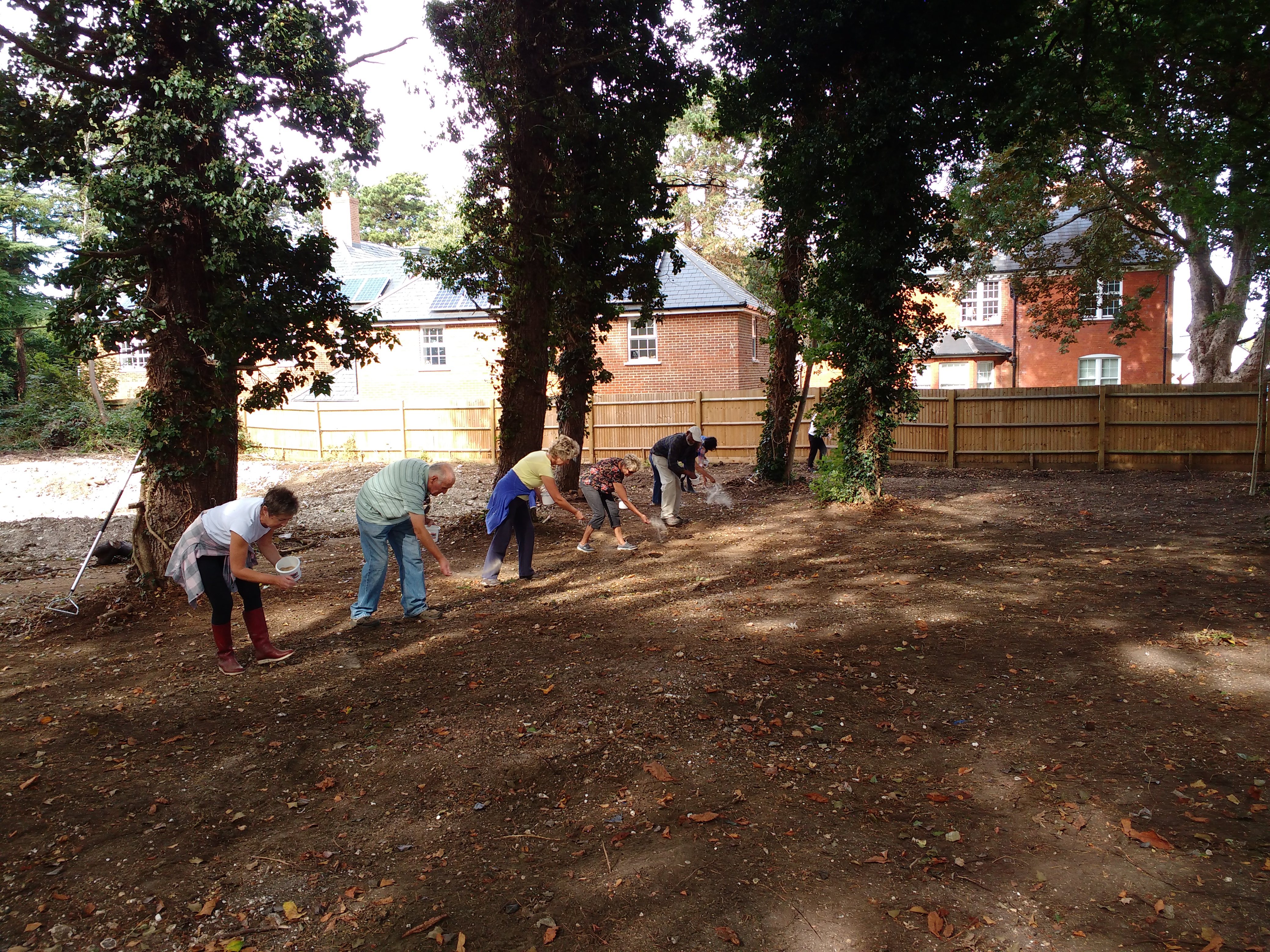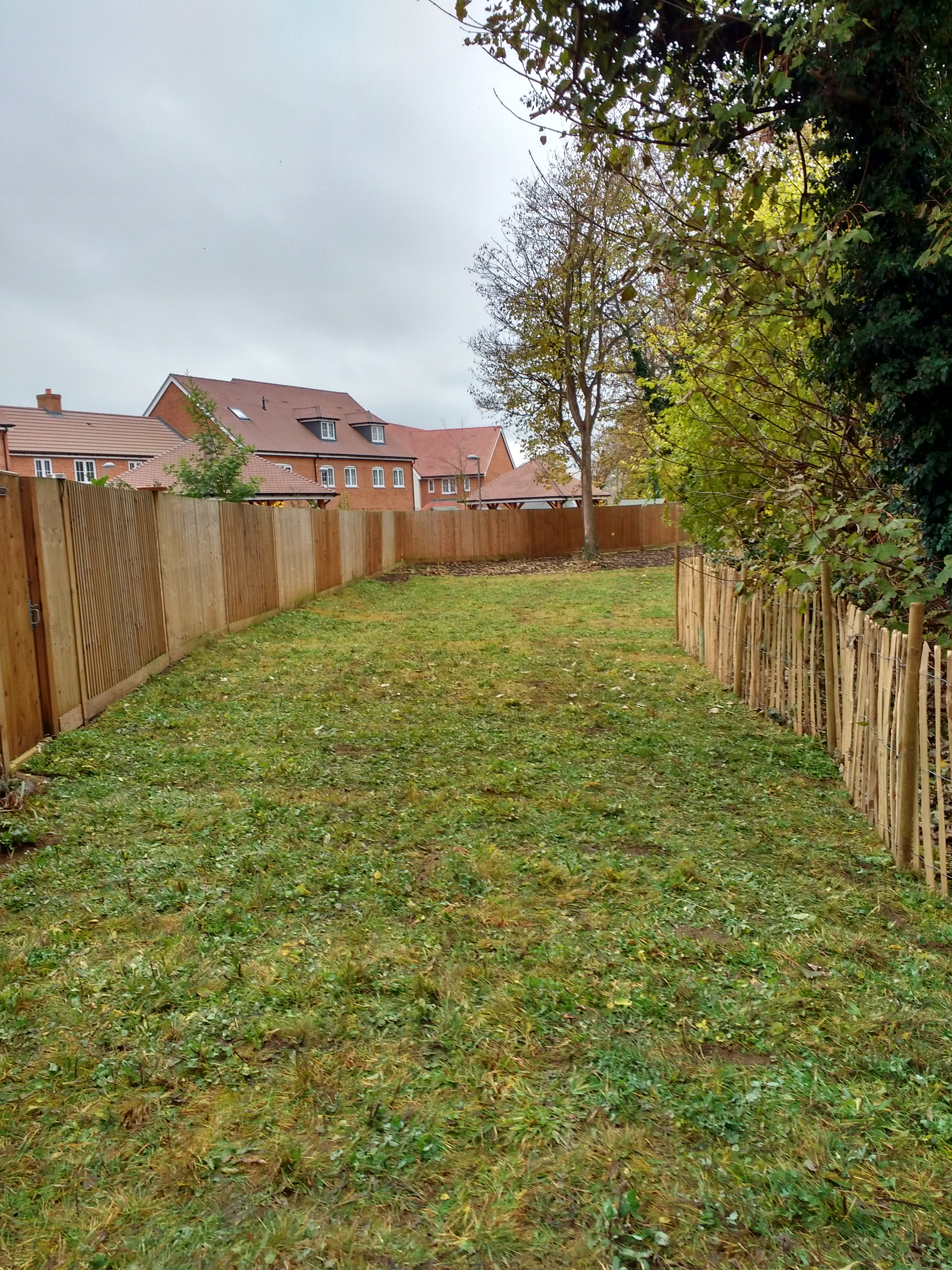Over the past few months, a huge effort has been invested by SNCV and local Queen Mary’s Woodland volunteers to bring future floral splendour to the woodland. Nature conservation is a discipline that is always informed by science and occasionally, partway by art. Sometimes when restoring habitat, like restoring a painting, one just has to scrape away and start again.
A management objective for the woodland is to diversify its habitat from what was a singularly very shady, ivy dominated woodland. To this end, we have been resetting the light levels across the woodland. Since last winter, work has focused on clearing trees and shrubs and other ‘rough’ vegetation to allow for more open and sunnier conditions through to dappled shade and then fuller shade conditions within the woodland.
This is most evident on the eastern side of the wood, where, after much clearance of invasive cherry laurel and sycamore, the subsequent ground scraping of topsoil created a new bare ground ‘canvas’ to work on. The plan for this area is to create new grassland and herbaceous dominated vegetation zones, with a high diversity of flowers and grasses. These would then be relatively easy to manage through seasonal meadow management, such as an autumn cut and clear and hopefully in the future, conservation grazing.
A new canvas

There was little of particular interest from the subsequent spontaneous growth of vegetation from the remaining seed bank: a bit of cock’s foot grass, cleavers, herb robert and some thistles and brambles. This was sprayed off and hoed, to keep the ‘canvas’ free from unwanted species and ready for a new palette of plants to be encouraged.
Next came the new seed sowing, which were undertaken by the Biodiversity Team and volunteers over a number of sessions, from late summer through to the autumn. Various commercial wildflower and grass seed mixes suitable to the site’s conditions, such as, chalk grassland, woodland and hedgerow were selected (as well as a pond margins mix for the new pond). These were then blended together in various proportions to help widen the range of potential plants to grow within any one area. Most areas were sown with about 5g of seed per square metre, the majority (c.60%) of that being wild grasses. We also planted 75 mature foxglove plants (9cm pots) among the cedar trees. As foxgloves are biennial we shall see their beautiful spikes of purple bells flower next year and hopefully they will then perpetuate themselves.
Seed sowing with woodland seed mix


Planting foxgloves

Elsewhere, along one long strip on the south eastern side, we have also invested in experimenting with three contrasting small scale grassland creation techniques. Like elsewhere, the whole area was scraped with a excavator to remove the concrete and any topsoil, to reveal the chalky subsoil below. We then laid down 150mm layer of Meadowmat low fertility soil, a commercial product with a very low nutrient factor. This created a superb base for the introduction and establishment of a wildflower meadow and will hopefully deter those nutrient hungry nettles, docks and brambles.
The three techniques we used were:
- 120m² of standard seed sowing of a chalk meadow seed mix
- 160m² area covered with a 25mm deep layer of a commercial product called Wild Flower Earth which is essentially a pre-seeded germinating medium; we chose the peat free option!
- 200m² of Meadowmat – a commercially grown wild meadow turf.
From a materials cost and logistics perspective, if you are interested in trying any of these at home, seeding was cheapest (approx £3 per m²) and least effort. Turf laying was the most expensive (£10 per m²) and the hardest work (most labour intensive!) and the Wildflower Earth was nearly the same cost as the turf (£9 per m²) but easier to install by just raking out, although we added some grass seed because it does not include grass seed as standard.
An area of the low fertility soil base sown with chalk meadow mix

Wildflower earth being raked out

Meadow turf laying

Meadow complete!

A green fuzz of germinating plants can already be seen and we shall watch with fascination how all these areas develop. No doubt additional weeding and a little fussing over will be required to help establish these new plant communities. We plan to carry out more seed sowing and wildflower plug planting around the woodland loop path and other areas next spring, once the new path and additional tree work has been completed this winter.
We’ll be keeping you updated as to how each of these experimental areas works out!
Germinating seed!

If you want any advice on how to create your own wildlife rich area, please get in touch with the SNCV sncvvolunteers@hotmail.co.uk, chat to the Biodiversity Team biodiversity@sutton.gov.uk or look through the old wildlife gardening pages for some ideas: http://www.sncv.org.uk/biodiversitygardens/wildlife-gardening-resources/






